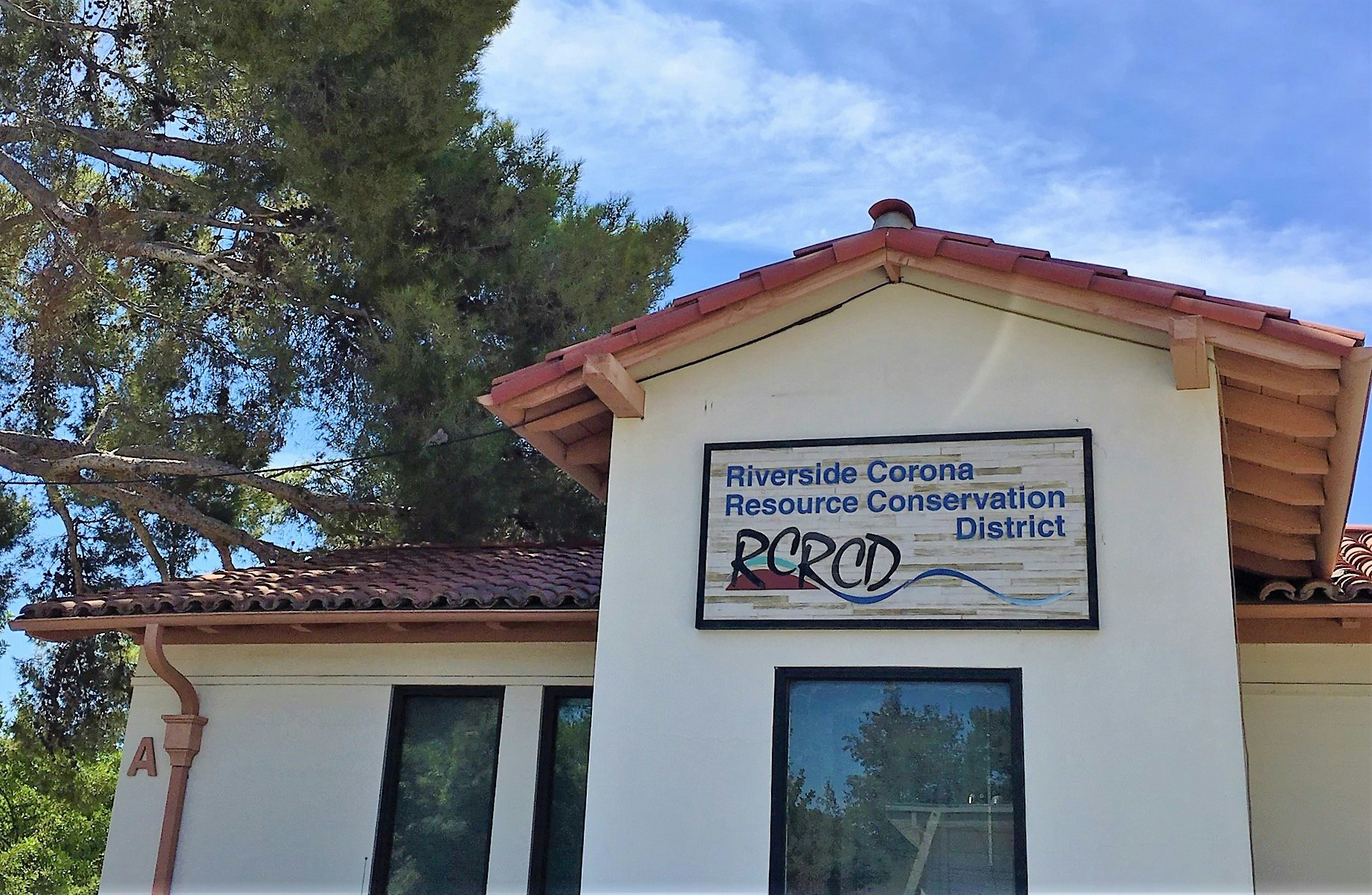Facilities

The main office of the Riverside-Corona Resource Conservation District (RCRCD) is located at the Resource Conservation Center in Riverside, CA. The LandUse Learning Center is also located at this site. The Sycamore Creek Interpretive Center, owned and managed by the RCRCD is located in Temescal Valley and sits on a 72 acre nature preserve. The district is also developing an aquatic research and native fish breeding facility in the agricultural Greenbelt area of Riverside.
Resource Conservation Center
The Resource Conservation Center (RCC) is a re-purposed 9-acre campus that is located at an antiquated research facility, the former USDA’s Soil Salinity Laboratory at the base of Mt. Rubidoux near downtown Riverside. In an effort to reuse the site, the buildings were renovated for energy efficiency and handicapped accessibility. The Center houses the Conservation District’s headquarters (Building A) and other agencies with complimentary missions within other buildings.
To demonstrate the principle of “re-use”, the existing buildings were renovated. Initial demonstrations included: retrofitting parking areas with outdoor solar lighting, drought tolerant landscaping, and permeable surfacing materials. A native plant nursery was developed in abandoned salinity treatment areas, and old walk-in cold rooms have been refurbished for seed-banking. Today, the nursery and a seed bank are used for propagation of local plant species and seed storage. In addition, the RCRCD operates aquatic tanks and raceways for rearing threatened fish and amphibians; greenhouses; and the LandUse Learning Center, a demonstration garden. Conservation agencies and grassroots organizations use the Resource Conservation Center demonstration garden and conference room for programs, training, and meetings.
For fish studies and propagation, the District constructed:
• A 300-foot long, recirculating stream in the LLC where staff manages a native fish population that includes Arroyo Chub, Santa Ana Speckled Dace, and Santa Ana Sucker.

• Seven fish raceways that are used to breed, study, and research the life history, growth, fecundity (reproduction), and health of native fishes.
• Eighteen re-purposed concrete tanks that are used to temporarily quarantine and treat ill or stranded fish, turtles, frogs, and salamanders that have been displaced.
Utilizing these Resource Conservation Center facilities, staff have conducted numerous research projects, including fish sensitivity to water-borne contaminants; exotic red algae impacts to the Santa Ana Sucker; and Santa Ana Sucker longevity and reproduction.
The facility and buildings at 4500 Glenwood Dr., Riverside, CA 92501 also house the California Department of Food and Agriculture’s (CDFA’s) facility for research and control of the Glassy-winged Sharpshooter and Asian Citrus Psyllid; and the Citrus Research Board.




